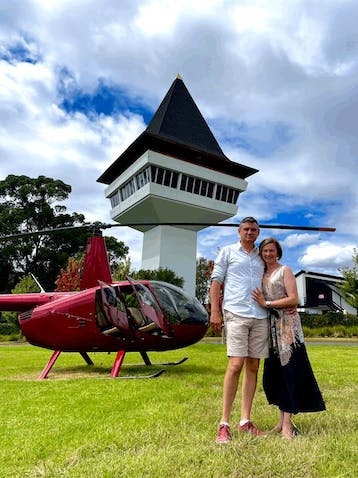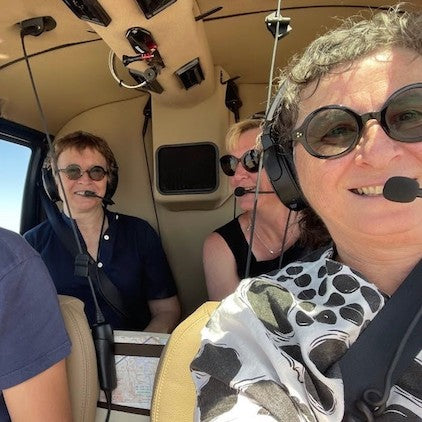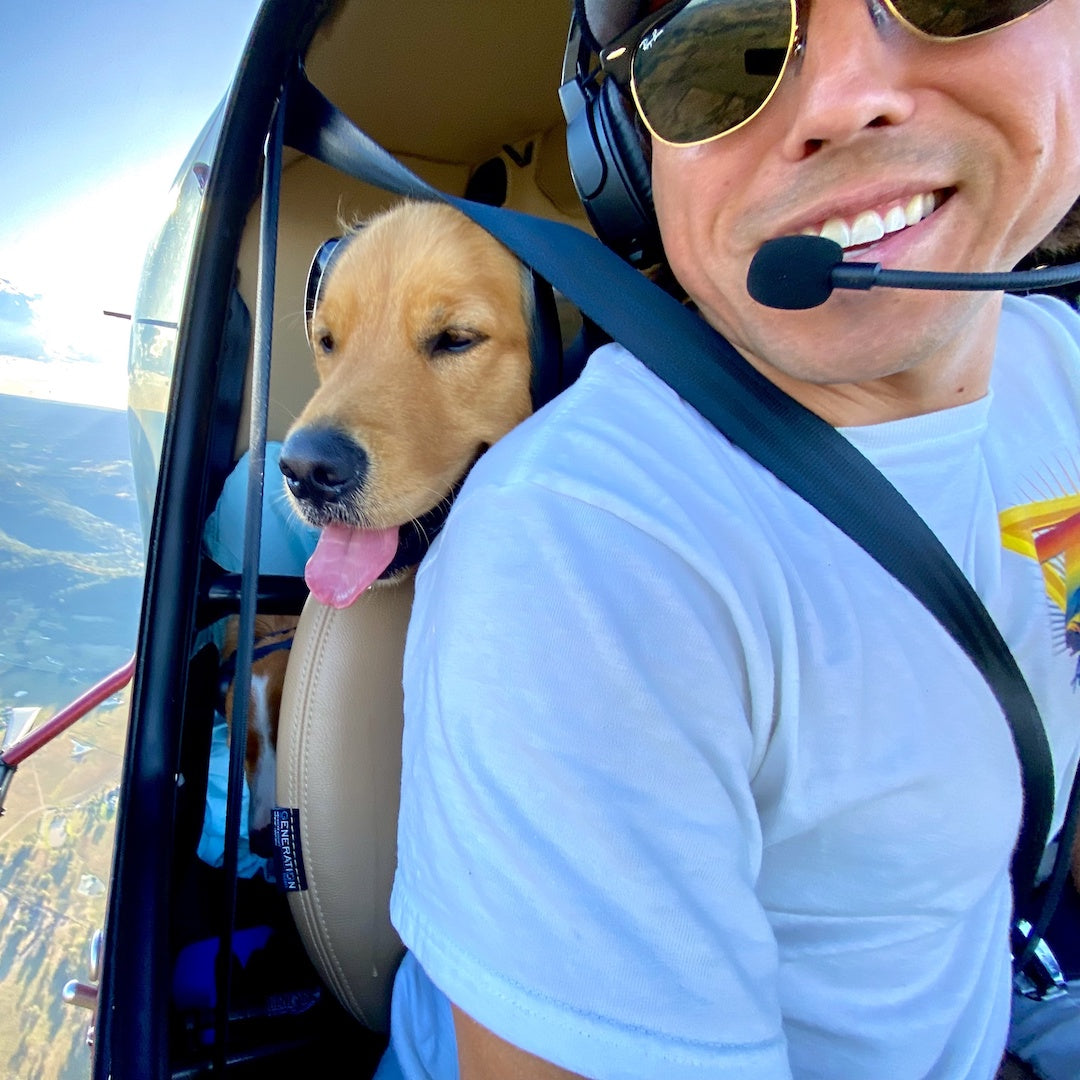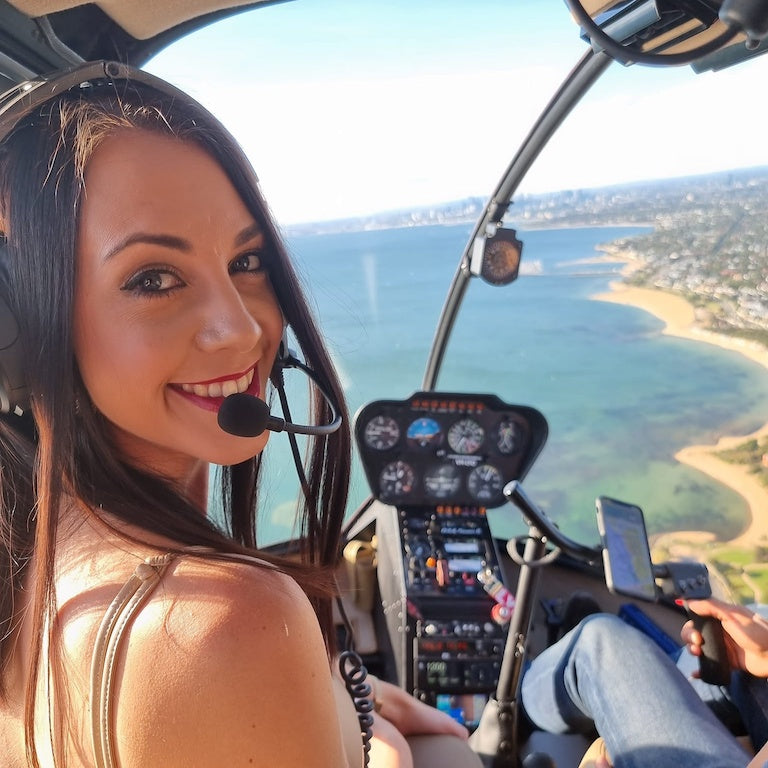If you're planning on seeing the Twelve Apostles, it means you're likely taking a Great Ocean Road Trip that will take you to scenic spots like Port Campbell National Park, Great Otway National Park, Bells Beach, Apollo Bay, Loch Ard Gorge, and so much more!
The fact is that a single day isn't nearly enough to see everything on this great southern touring route, but with our guide, you can definitely make it to the most famous stops along the Great Ocean Road.
Let's find out everything there is to know about taking an iconic road trip along the Great Ocean Road, with this Great Ocean Road Trip itinerary. If you're already going to see the 12 Apostles, you may as well see a few more amazing sights too!
What to expect?
- Where to Start – What Direction Is Best to Drive on the Great Ocean Road?
- What to Do on the Great Ocean Road in One Day – Possible Itinerary Stops
- How Long Is the Great Ocean Road?
- The Three Sections of the Great Ocean Road Drive
- What Is the Best Season to Take a Great Ocean Road Trip?
- Weather on the Great Ocean Road
- 12 Apostles Helicopter Tour With Rotor One
Where to Start - What Direction Is Best to Drive on the Great Ocean Road?
If you're looking for the best possible experience, the best direction to drive on the Great Ocean Road is West, starting in Melbourne and heading towards the 12 apostles, with the end of the trip being in Port Fairy.
Not only is this direction the most scenic, but also quite convenient, because if you drive West, it means you’ll drive on the left side of the road, which faces the ocean. This makes it much easier to pull over at the various lookouts, beaches, and other roadside attractions.
Also worth considering here is that when you start in Melbourne, the road just naturally unfolds westwards. It all starts in the upbeat surf towns and continues towards the dense rainforests in the Otways, and ends at the 12 Apostles, a strong visual finale to any trip.
All of that being said, if you don't have that much time to spare, and you want to see the world from a unique perspective, taking a helicopter tour over the Great Ocean Road into the 12 apostles is always an option. It saves you the hassle of driving for several hours, and still allows you to all of the area’s most attractive locations.
What to do On the Great Ocean Road in One Day - Possible Itinerary Stops
Let's take a look at all of the possible stops you can make on your trip through the Great Ocean Road region. Keep in mind that there are more stops here than you'll be able to make in a single day, so you'll have to pick which ones you'd like to visit the most. Although, if you'd like to see all of them, a multi-day Great Ocean Road trip is always an option too.
These locations are in order from east to west, allowing you to progress from one to the next in order along the Great Ocean Road.
Point Danger
Point Danger should be the first stop on your Great Ocean Road itinerary, a headland with stunning views of the Bass Strait. It's a great spot to stretch your legs and get some salty air, and it's located right in Torquay.
In winter, it’s a hotspot for whale watching as humpbacks and southern right whales migrate along the coast. There’s also a surf lifesaving memorial and interpretive signs to give it some extra meaning.
Bells Beach
A little west of Torquay, Bells Beach is one of Australia’s most famous surf spots and home of the Rip Curl Pro. Even if you don’t surf, it’s worth visiting for the clifftop walkways and views of the Southern Ocean. The crashing waves below, the salt in the air, and the coastal chill make it the perfect first stop on your road trip.
Split Point Lighthouse

Perched above Aireys Inlet and located between Torquay and Lorne, the Split Point Lighthouse is a historic landmark that offers guided tours and coastal views. It’s been operating since 1891 and still guides ships today. The lighthouse was in the Aussie kids’ show “Round the Twist”, and the views of the sea cliffs and wild waves below make this a great cultural and scenic stop.
Erskine Falls
Just outside Lorne, Erskine Falls drops 30 metres into a fern gully within Great Otway National Park. You can take a short walk to a lookout or descend the stairs to stand at the base of the falls and listen to the roar. It's one of the most accessible waterfalls in the region and a refreshing break from the coast.
Great Otway National Park
Running along the Rainforest Coast section, Great Otway National Park is home to towering eucalyptus trees, glow worm caves, waterfalls, and secluded beaches. It’s also one of the best places in Victoria to spot wild koalas snoozing in the trees. Hiking, camping, and wildlife photography are popular here so a must see for nature lovers and outdoor enthusiasts.
Hopetoun Falls
Next on your itinerary, Hopetoun Falls is a showstopper in the Otways, dropping 30 metres into a dense fern gully that feels almost prehistoric. There’s a quick walk to a viewing platform above, and a steep but worthwhile trail that takes you right to the base for that perfect misty photo. With moss-covered rocks and lush greenery all around, this spot is pure rainforest magic.
Apollo Bay
Apollo Bay is a picturesque coastal town known for its sheltered beach, local seafood, and laid-back vibe. It’s a great place to grab lunch, restock supplies, or spend the night. From here, you can easily reach the Otways or take a scenic drive inland to the Volcanic plains. Don’t miss the Apollo Bay Fishermen’s Co-op if you’re a fan of fresh, local seafood straight off the boat.
Volcanic Plains
Just inland from the Great Ocean Road, Victoria’s Volcanic Plains are often overlooked but offer a unique contrast to the coastal scenery. This region features crater lakes, lava flows, and grassy plains dotted with volcanic cones. It’s ideal for geology buffs or anyone wanting a different kind of landscape. Stop by Lake Corangamite or Camperdown for a quick detour with wide-open views.
Gibson Steps
Right before the Twelve Apostles, the Gibson Steps offer a rare opportunity to walk down to beach level and view the towering limestone stacks from the sand. You’ll feel tiny as you stand next to cliffs that rise over 70 metres. The beach is accessible only at low tide, so check the conditions before descending. It’s a raw, powerful experience and a great photo stop.
Twelve Apostles
The most iconic highlight of the Great Ocean Road, the Twelve Apostles are massive limestone pillars that rise from the sea just off the coast. While there are fewer than twelve remaining, the sight at sunrise or sunset is unforgettable. There’s a well-designed viewing platform, and nearby helicopter tours give you an aerial look at the scale and beauty of this natural wonder.
Loch Ard Gorge
Named after a famous shipwreck in 1878, Loch Ard Gorge is a dramatic coastal inlet surrounded by towering cliffs, located just a bit further west than the Twelve Apostles.
It’s a place of both beauty and tragic history. There are short walking trails with signage that shares the story of the Loch Ard survivors, and the beach below is a calm spot to reflect. It’s one of the most atmospheric stops on the drive.
Port Campbell
This quaint fishing town is just minutes from several key attractions like the Twelve Apostles and Loch Ard Gorge. Port Campbell offers cafés, scenic lookouts, and accommodation options. It’s a great place to base yourself for a night or two, especially if you want to explore nearby spots in the early morning or after the crowds have thinned out in the evening.
Port Campbell National Park
This national park has many of the Great Ocean Road’s famous rock formations including the Twelve Apostles, Loch Ard Gorge, and London Bridge. It actually encompasses several of the landmarks discussed above.
It’s known for its cliffs, wave-sculpted stacks, and rough seas. Walking trails and lookouts get you up close to its raw beauty - A must-do for coastal scenery.
London Bridge
Just West of Port Campbell, you'll find London Bridge. Once a double-arched rock formation, London Bridge partially collapsed in 1990, leaving a large offshore stack.
The remaining arch is still striking and stands against the wild waves below. Viewing platforms and walking trails offer plenty of angles for photos, and interpretive signs explain the geological changes over time. It’s a fascinating example of how quickly the coastal landscape can shift.
Bay of Islands Coastal Park
Further west on the Great Ocean Road, this park has equally impressive rock formations to the Twelve Apostles, but with much fewer crowds. The Bay of Martyrs and Bay of Islands lookouts are stunning at sunset, both making for the perfect spot for photography. The area is less developed, so it feels wild and untouched. If you have time, this is a great addition to your trip.
Point Sinclair
If you're looking to extend your trip past the Great Ocean Road, Point Sinclair is a quieter section of rugged coast, ideal for those who want a longer trip into South Australia.
It’s perfect for those who want solitude, dramatic views, and a break from the crowds. It's worth the detour if you want an off-the-beaten-path experience and don’t mind driving a bit further.
How Long Is the Great Ocean Road?

The Great Ocean Road is roughly 243 kilometers, stretching along the southeastern coast of Australia, in the great state of Victoria. The Great Ocean Road starts in the small town of Torquay, and ends in a scenic location known as Allansford.
It's an iconic coastal route, and certainly one of the most scenic drives in all of Australia. The great ocean road will take you past rainforests, beaches, dramatic cliffs, and amazing landmarks alike, including, of course, the 12 Apostles.
It is technically possible to drive the whole stretch in under 5 hours, although most would recommend taking an entire day, if not several days, to enjoy all of the sites that the Great Ocean Road region has to offer. Due to its location however, you could start in Melbourne, take a day trip to the Twelve Apostles and any of the other spots on our list today, and then drive back to Melbourne, all in a single day.
With that being said, driving so far in a single day while trying to stuff so many visits in is likely not going to be very relaxing, which is why a Rotor One Twelve Apostles helicopter tour is the way to go.
This tour departs from Melbourne and flies you over the stunning coastline, right to the Twelve Apostles, where you'll land and have the opportunity to explore. Even better is that this helicopter tour also comes with the option of making a lunch and winery stopover at numerous wineries along the Great Ocean Road.
The Three Sections of the Great Ocean Road Drive
Interesting to note is that when you drive along the Great Ocean Road, there are actually three distinct sections, each with their own unique spots, vibes, and seams.
Surf Coast
First, we have the Surf Coast, which stretches from Torquay to Lorne, which means that it is the closest section to Melbourne. If you only have time to see one section, and you like beaches and surfing, then this is the section for you.
Here you'll see many sandy shores, large cliffs, and plenty of surfers catching huge waves. If you want stunning ocean views, this is the section you need to see. Beaches like Bells Beach, Jan Juc, and Point Addis are all found here.
Rainforest Coast

The next section of the Great Ocean Road is the Rainforest Coast, specifically characterised by The Great Otway National Park and the Otway ranges. Here, you'll see plenty of massive trees, waterfalls, and lush rainforest.
This is a green and cool section of the great ocean road, and it feels absolutely nothing like the beaches that came before it.
If you like seeing koala bears and other native Australian wildlife, then this is the section of the Great Ocean Road worth visiting for you. With plenty of wildlife wonders, viewing platforms, and more, this section, complete with ancient rainforest, is a wonder worth seeing.
Shipwreck Coast
The final stretch of the Great Ocean Road is known as Shipwreck Coast, and this stretches from Cape Otway to Port Fairy, the westernmost point of this scenic road.
Here, you'll find a dramatic and rugged coastline, aptly named shipwreck coast, as there have been hundreds of shipwrecks there over the past years, all due to its dangerous and wild waters. If you’re looking to find the Twelve Apostles, Loch Ard Gorge, or the London Arch, this is where you’ll need to go.
What Is the Best Season to Take a Great Ocean Road Trip
If you plan on driving through the great ocean road region, every single season of the year is worthwhile, although there are some differences that you need to know about.
During the summertime, which lasts from December to February, you can expect temperatures to range anywhere between 25° and 35°C. If you're all about outdoor dining, surfing, swimming, and exploring beach towns, this is the time of year you'll want to go. With that being said, it's also an extremely busy time of year, so booking any accommodation well in advance is strongly recommended.
We then have the fall or autumn, which lasts from March to May, and this is great for people who like slightly milder temperatures of between 17° and 25°C. If you like smaller crowds and clearer skies, then this is definitely one of the best times of year to go. Even better is that thanks to the changing foliage, there's plenty of colour as you take rainforest walks.
Although winter, which lasts from June to August, isn't the best time of year to drive along the Great Ocean Road, it still has its charm. During this time, you can expect a good deal of rain, with temperatures ranging from 10° to 15°C. If you're all about moody coastal cliffs, whale watching, and misty forests, then this is a good time of year to go. It's also worth noting that during this time, rates for accommodation are lower as well.
If you're looking for a well-balanced time of year to visit the Great Ocean Road, going during the spring time, which lasts from September to November, is recommended. During this time, the crowds haven't quite hit their peak yet, the waterfalls are full of water, and the wildflowers are already blooming, with temperatures around 15° to 22°C. If you like ideal hiking and photography conditions, then this is the time of year to go.
Weather on the Great Ocean Road
Something you want to do if you're taking a trip along the Great Ocean Road is prepare adequately for various types of weather, because the weather here is known for being very unpredictable.
You might experience a mix of rain, wind, and sun, even all in the same day. Keep in mind that this is a coastal climate, so even during the summertime, you could expect cool ocean breezes.
Furthermore, keep in mind that coastal areas and inland areas will vary greatly in terms of weather and temperatures. Remember that if you're going to the Otways, rain is common here, so you'll want to bring adequate clothing and gear, particularly if you plan on hiking.
If you plan on sticking more to the coast, remember to bring along a windbreaker or a good coat, because those ocean breezes can get pretty chilly at times.
12 Apostles Helicopter Tour With Rotor One
For those short on time but big on adventure, the 12 Apostles Helicopter Tour from Melbourne is a quick and thrilling way to see one of Australia’s most famous landmarks. Departing from Essendon Airport, just 20 minutes from Melbourne CBD, this tour gets you from city to coast in under an hour, far quicker than the 4.5 hour drive.
During the 70 minute scenic flight, you’ll fly over the stunning Great Ocean Road with aerial views of Loch Ard Gorge, The Arch, London Bridge, The Grotto, and of course, the towering limestone pillars of the Twelve Apostles. Every seat is a window seat, so you won’t miss a moment of the breathtaking views.
Once you arrive, you’ll land at the 12 Apostles Helipad for a two-hour stopover. Whether you take the short walk to Castle Rock lookout or venture down the Gibson Steps to the beach (if the tide allows), this is your chance to see the formations up close without the crowds or traffic.
What sets this tour apart is the option to add stopovers on your return flight, something few other experiences offer. Choose a winery lunch at a beautiful vineyard where you can relax over a gourmet meal and local wines before returning to the city, or stop at Phillip Island to see the Penguin Parade, complete with ground transport and guided access.
Ideal for couples, small groups, or visitors on a tight schedule, this helicopter tour combines luxury, speed, and unforgettable sights into a half day experience. It’s also a great gift option or bucket list upgrade for your Great Ocean Road adventure. With Rotor One’s perfect safety record, experienced pilots, and optional upgrades this is like a flying highlight reel of southern Australia’s best coastal views.






